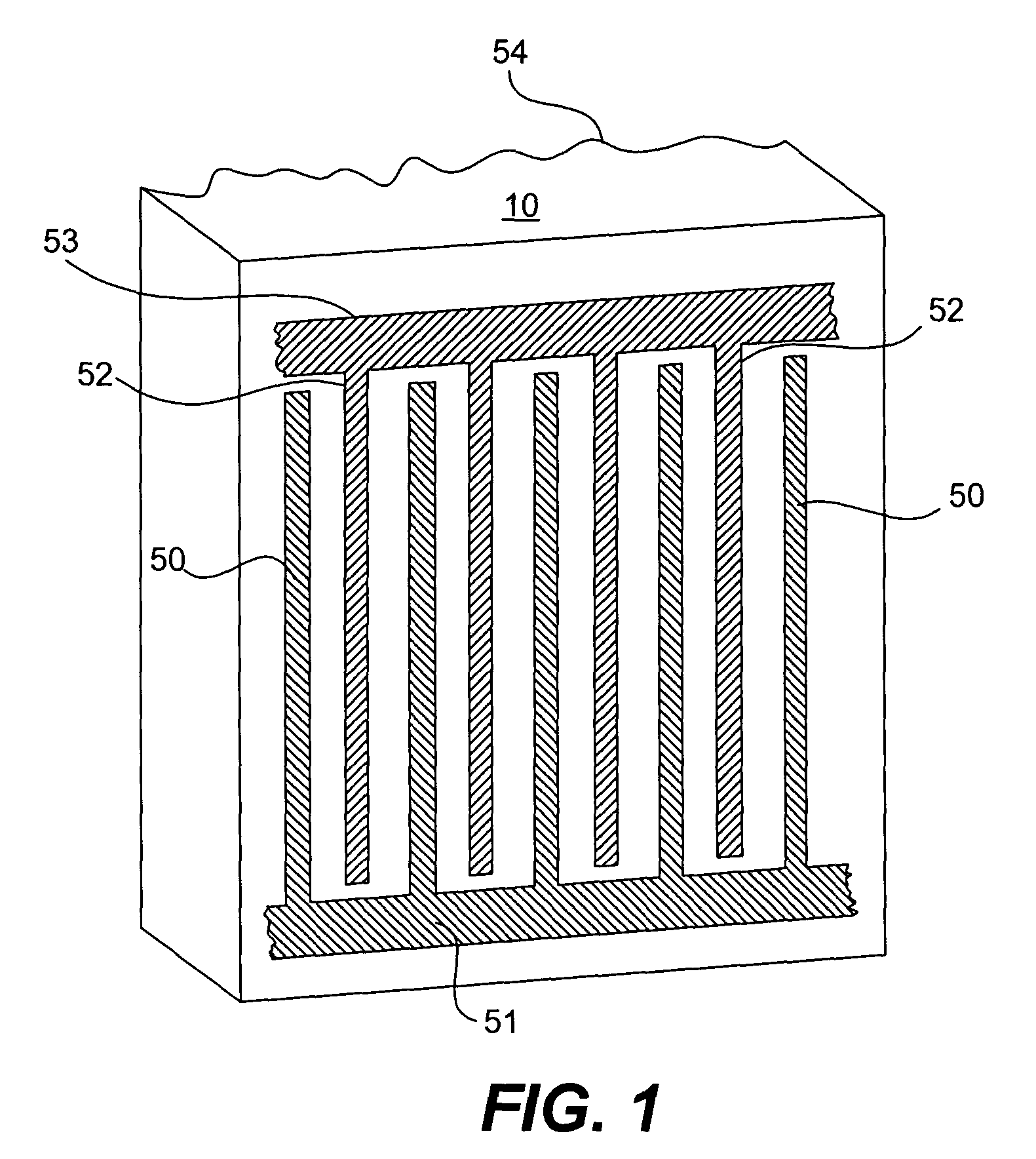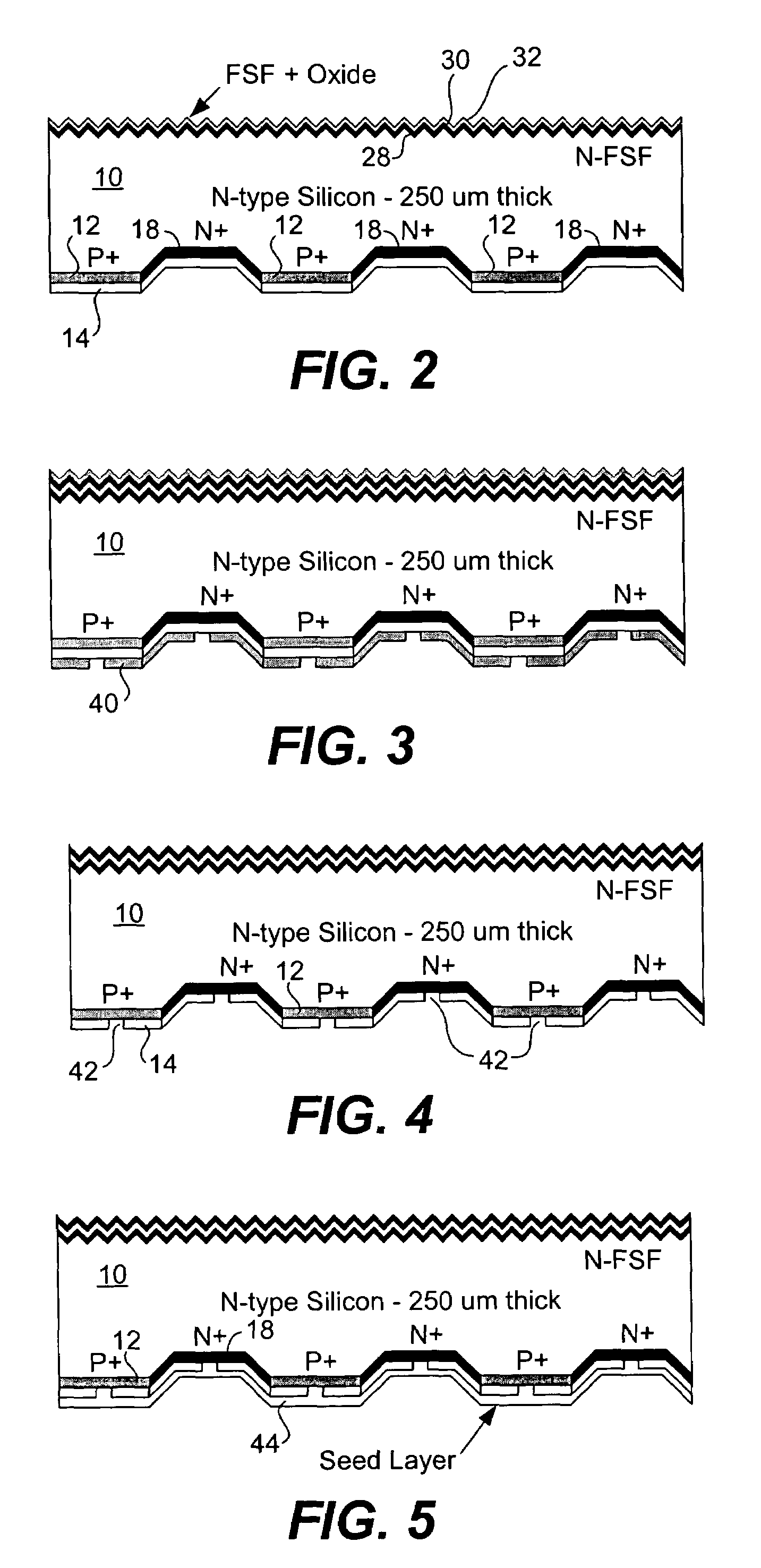Metal contact structure for solar cell and method of manufacture
a technology of contact structure and solar cell, applied in the field of solar cells, can solve the problem of limiting the efficiency of photovoltaic cells in directly converting solar energy to electricity to less than 30%
- Summary
- Abstract
- Description
- Claims
- Application Information
AI Technical Summary
Problems solved by technology
Method used
Image
Examples
Embodiment Construction
[0011]FIG. 1 is a perspective view of a solar cell in which metal contacts in accordance with the invention are especially applicable. In this embodiment, the cell is preferably manufactured in a single crystalline silicon substrate having a (100) crystalline orientation or in a multi-crystalline silicon substrate with minority carrier lifetime greater than 200 micro-seconds.
[0012]In this embodiment, a front surface of the solar cell has a textured surface 54. An antireflection coating can be applied to assist in the coupling of light energy into the solar cell and improve efficiency. On a back surface, metal contacts 50, 52 in accordance with the invention contact p doped regions and n doped regions respectively, in spaced layers of the back surface. The contacts are respectively connected with grid lines 51, 53 in a grid pattern. The line size is exaggerated in the drawing. The fabrication of the solar cell uses conventional semiconductor processing, including the use of backside ...
PUM
| Property | Measurement | Unit |
|---|---|---|
| wavelength | aaaaa | aaaaa |
| electrically conductive | aaaaa | aaaaa |
| chemical | aaaaa | aaaaa |
Abstract
Description
Claims
Application Information
 Login to View More
Login to View More - R&D
- Intellectual Property
- Life Sciences
- Materials
- Tech Scout
- Unparalleled Data Quality
- Higher Quality Content
- 60% Fewer Hallucinations
Browse by: Latest US Patents, China's latest patents, Technical Efficacy Thesaurus, Application Domain, Technology Topic, Popular Technical Reports.
© 2025 PatSnap. All rights reserved.Legal|Privacy policy|Modern Slavery Act Transparency Statement|Sitemap|About US| Contact US: help@patsnap.com



